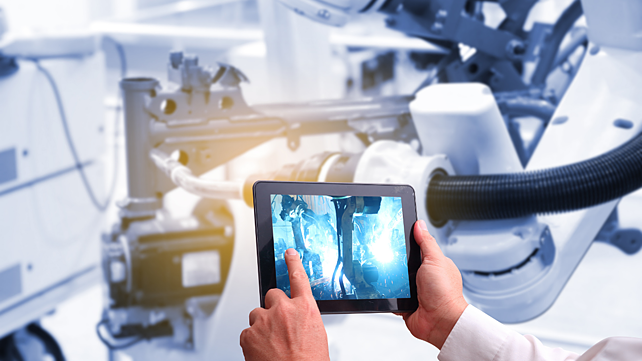
Even before the COVID-19 outbreak, the automotive industry in India and worldwide had been facing headwinds. But the pandemic accelerated their pace as well as that of upcoming trends. For instance, the drive towards automation and online sales, to mention just two.
Industry 4.0 technologies are also transforming the manufacturing segment via 3D printing, robotics, industrial IoT, artificial intelligence and machine learning, amongst others. The shift from ICE (internal combustion engines) to EVs (electric vehicles) is a major disruptor. The manufacturing of ICE-based vehicles diverges significantly from EVs, which need lesser parts.
Implications of technology
This transition holds long-term implications for both the automotive players and their workforce. Auto component makers will need to make a major shift from their present business model of providing engine parts, exhaust pipes, gearboxes, etc. to electric motors, batteries and suchlike.
For the workforce, the emphasis on automation and digital sales indicate a shift from low-wage jobs requiring limited skills to high-wage roles demanding higher skills. For example, jobs in machining, maintenance, assembling and fitting, to name a few, will give way to roles such as electromechanical technician, motor control engineer and operators to manage robots and programming, among others.
A McKinsey report notes that in the future of work after COVID-19, most of the growth in the labour demand will emerge in high-wage jobs. It cautions that in the future more than 50% of the low-wage displaced workers would have to shift to roles in higher wage brackets that call for diverse skill-sets to stay employed.
Already, a clear mismatch exists in specific areas between skills the industry needs and those the youth across India possess. Considering these conditions, the sector is slated to confront a big void in the coming days. But proactive initiatives and policy reforms could help address the issue.

For instance, skills training can be imparted to people across the entire value chain, not just in the workshops. In this connection, along with Google India, an industry skilling association launched a programme to train more than 20,000 auto dealers in plugging the digital skills gap among them. It aims to augment dealers’ capacity in digital sales, which are emerging as vital growth drivers for keeping sales running despite stringent social distancing restrictions during lockdowns.
Be it automotive or any other sector, relearning and upskilling are becoming the norm in adapting to the post-pandemic world order. Moreover, two of the Centre’s ambitious programmes – Atmanirbhar Bharat (self-reliant India) and a $5 trillion economy – will depend on various industries promoting professional learning and development programmes so that both workers and these domains remain future-ready.
Although digital was previously perceived as a disruptor of industries, given the pandemic, it needs to be viewed afresh as a bulwark between the success and failure of enterprises. Interestingly, another McKinsey report – Reimagining the auto industry’s future: It’s now or never – highlights why there is a radical focus online. Now more than ever, a rising number of consumers are using online channels for executing sales orders with enterprises in every industry.
As per McKinsey’s recent digital sentiments analysis, the use of digital channels in Europe has risen by 13 percentage points on average. While this is true for every EU nation surveyed, the biggest jump has happened in Germany. Here, the use of digital channels registered a 28 percentage points spike due to COVID-19. More significantly, 72% of first-time users and 70% of regular ones in Germany said they will continue engaging with online modes even after the pandemic abates. Undoubtedly, an online presence represents a game-changer for businesses.
Digital drives sales
In the dealership segment too, a major transformation is underway. Rising digitalisation and increasing numbers of millennials are nudging companies to offer bespoke solutions in supporting a heavy focus on relationship and retention of customers. As a result, an omni-channel presence will gradually lead to the reskilling of sales staff as trusted customer advisers.

Due to the on-going coronavirus crisis, the automotive sector has realised the benefits of deploying digital to keep BCPs (business continuity plans) moving. In February 2020, a clear case of contrasting outcomes in China drove the point home. During this period, while the automotive sector recorded an overall decline of 80% in sales, a US electric vehicle maker saw sales rise more than 10%.
The reason – even before the pandemic, the company had an established an online sales presence. This included a well-structured online shop coupled with contactless test drives and home deliveries of purchased cars. Its online sales model proved extremely effective even as a nationwide shutdown crippled other auto dealers.
Meanwhile, on-demand mobility is growing. As cash-strapped customers refrain from making higher investments in purchasing new four-wheelers, hired vehicles are preferred. Pre-owned vehicles are also gaining prominence as these can be purchased at heavily discounted prices. Automotive dealers and OEMs are noting these trends. Accordingly, job roles should be rejigged together with reskilling of employees.
With all these factors, including the burgeoning role of technology and its Atmanirbhar Bharat mission, the Central Government is retaining its focus on upskilling and reskilling the workforce, especially the youth.
Preparing for the future
India’s automotive sector is currently witnessing a transformation. Presently, it accounts for 7.1% of the GDP and 49% of the manufacturing output, while creating 32 million direct and indirect jobs in 2018.
Projections between 2019 and 2026 offer interesting insights. An ASDC-EY industry report – Human resource and skill requirements in the automotive sector (2026) – estimates that by 2026, 45.08 million persons will be employed in the sector. Of these, around 15 million jobs are slated to be generated by natural growth factors while 20 million will emerge from year-on-year employment replacement.

To meet the upcoming demand, while becoming future-ready too, today’s automotive workforce has to be reskilled or upskilled. Since legacy roles are fading, the new skills must be in the spheres of IoT, AI, mechatronics, robotics, 3D printing, machine learning, analytics, automotive design, virtual collaboration and computational thinking, to mention a few.
Accordingly, an industry skilling body has been undertaking multiple training activities across various zones by holding webinars and launching numerous courses. Beleaguered by the on-going pandemic’s repeated lockdowns and other restrictions, the automotive sector has suffered a loss of INR 2,300 crore per day, reveals a Parliamentary panel report. The sector’s estimated job loss is pegged at around 345,000, which may be conservative.
Since automotive and digital sales have emerged as global undercurrents, India must align its skilling levels to global standards so as not to miss the bus of industry transformation. For this, it must start incubating talent at a young age, beginning with schools and colleges. Additionally, industry skilling courses should be accorded the same weightage as academic ones. Skilling courses can be customised keeping Industry 4.0 in mind in the areas of manufacturing and maintenance as well as for the steady transition towards EVs.
If the above initiatives are undertaken on a war footing to bridge the digital skills gaps, sooner or later, India will emerge as an automotive manufacturing hub backed by adequate skilled talent across all segments.
About the Author: Nikunj Sanghi is the Chairman of Automotive Skills Development Council (ASDC).